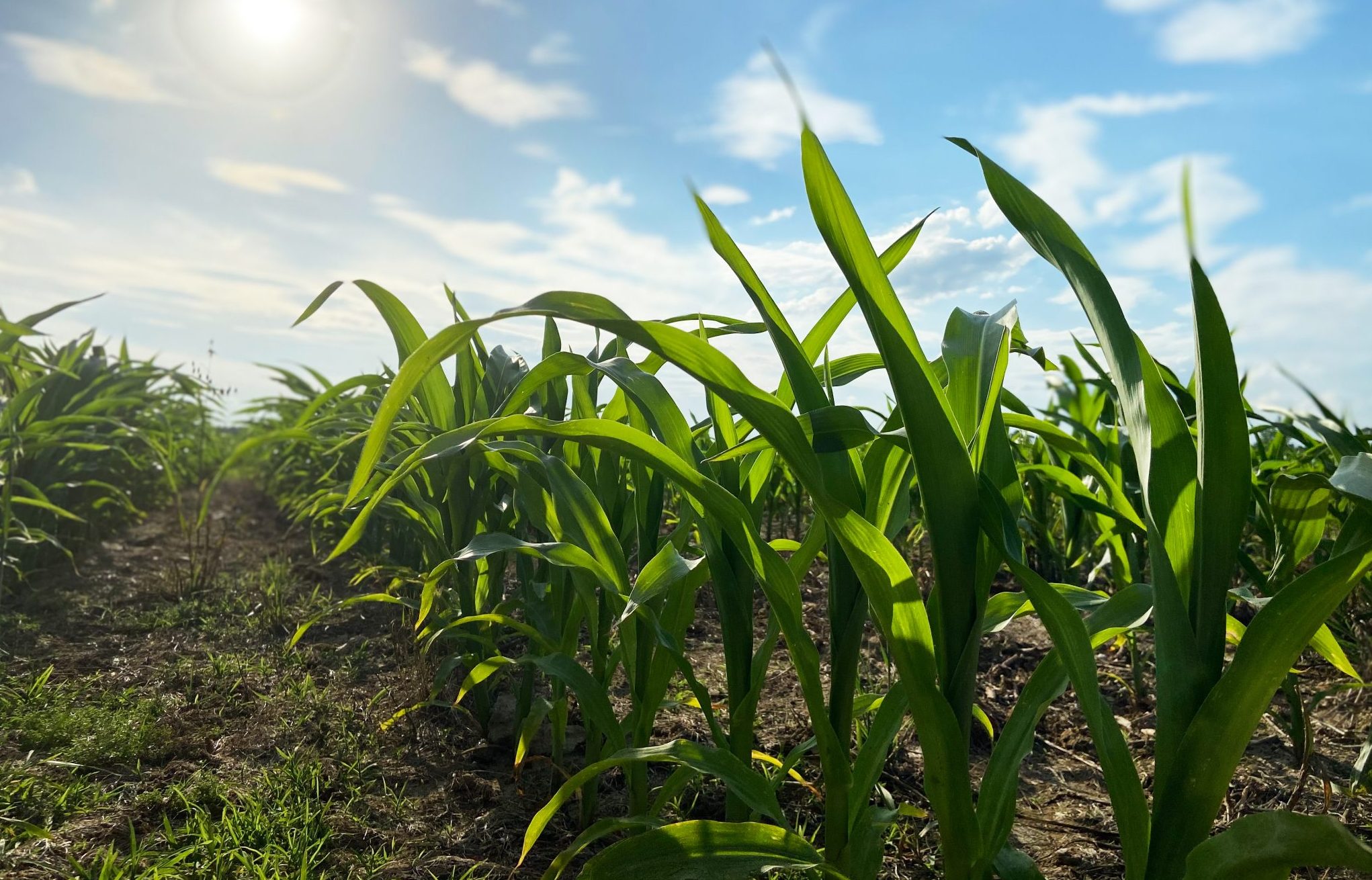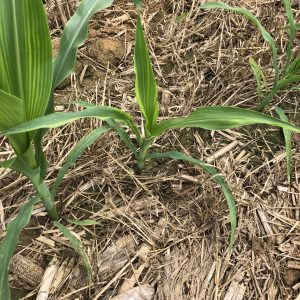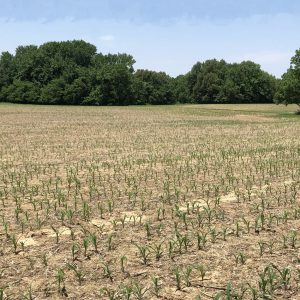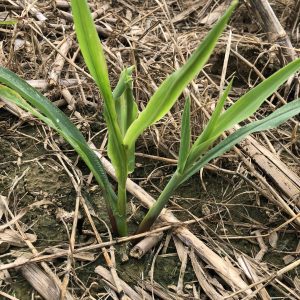Crop Production

After a few warm days, corn planters have started hitting the field in south Alabama. Corn is the first crop farmers can plant in Alabama, requiring soil temperature of 55°F to germinate and grow. Corn yields are strongly tied to planting dates and field uniformity. Corn needs a uniform stand and good root system to equally use resources. Some crops have ways to compensate and make up for early differences in maturity; corn has less of an ability to do so. Thus, when planting corn, producers prefer to plant each field once and want good conditions when doing so.
With that said, there are some things to consider for early season insect management. The first is cultural practices, fields at the highest risk of seedling insect pressure are those planted behind cover crops or in reduced or no-till fields. A long-standing integrated pest management (IPM) recommendation is to terminate winter vegetation at least three to four weeks prior to planting. This helps to eliminate the “green bridge” that allows insects to survive from winter covers to the planted crop. Another consideration is field history. Was the field previously in pasture or conservation reserve program (CRP)? It is common to see issues with soil insects following these situations.
- Suckered corn plant showing symptoms of stink bug feeding.
- Wireworm infestation resulting in a replant.
- Suckered corn plant showing symptoms of stink bug feeding.
Below Ground Pests
Several pests below ground attack germinating and seedling corn. Some potential pests include billbugs, wireworms, corn rootworms, sugarcane beetles, and white grubs. Generally speaking, these pests are uncommon in Alabama corn fields. However, this is because nearly every acre of corn is planted with a seed treatment. In reality, most fields at-risk (i.e. reduced/no-till) have infestations of soil insects that would reach damaging levels if untreated.
Treatment Options
There are no reliable foliar applied insecticides for soil insects, thus these pests must be managed at planting. Commonly used insecticide seed treatments include Poncho (clothianidin) or Cruiser (thiamethoxam). These treatments are offered at low (250), medium (500) or high (1250) rates. Additionally, many pyrethroid insecticides are labeled as liquid in-furrow treatments and granular terbufos (Counter) is also available. Seed treatment rates and/or additional in-furrow treatments should be considered based on field risk. Higher seed treatment rates may be needed if wireworms or sugar cane beetles are present in high numbers. Western corn rootworm has been documented in North Alabama and is now suspected in some areas of South Alabama. If western corn rootworm is a pest, hybrids containing corn rootworm Bt genes may be needed. Note that these genes do not have activity on southern corn rootworm.
Above Ground Pests
Other pests, such as stink bugs, armyworms, and cutworms may also cause issues with stand loss. Corn planted next to wheat, or following legume cover crops may be at a higher risk of stink bug injury in the seedling stage. Armyworms or cutworms tend to be worse following no-till and/or high residue cover fields. These pests may clip plants at or near the soil level, causing stand loss.
Treatment Options
Pyrethroids applied behind the planter generally provide good control of armyworms and cutworms and should be considered in high-risk fields. Fields of seedling corn can be scouted for stink bugs; however, they may be difficult to find. Symptoms of damage include suckered plants with multiple stalks, “buggy whip” symptom where one side of the plant grows faster than the other and the tips of the leaves get tangled in the whorl. Threshold is 10% damaged or infested plants. Multiple species of stink bugs are found in seedling corn, however the brown species tends to be the dominate one. Highest labeled rates of pyrethroids provide the best control of this species.
Other Thoughts
Most available hybrids contain two or three Bt traits for control of corn borers, corn earworms, and other caterpillar pests. While these traits have efficacy on seedling caterpillars, they are generally not good at preventing stand loss because the caterpillars must ingest so much plant material before receiving a large enough dose for control. Thus, Bt corn should not be relied on to prevent stand loss from cutworms or armyworms.
Refuge requirements for Bt corn are another important consideration. In order to delay resistance in corn and cotton, refuge compliance is critical. In Alabama, corn growers are required to plant refuges of non-Bt corn depending on the number of traits their Bt corn has. Corn hybrids with two or more traits require 20% refuge of non-Bt corn. In other words, if 200 acres of corn are to be planted in an area, then 40 acres must be non-Bt. This includes refuge-in-the-bag (RIB) products. Details about the placement and arrangement of refuges may vary on Bt products. Consult with your seed dealer about refuge structure.
Trade and brand names used in this publication are given for information purposes only. No guarantee, endorsement, or discrimination among comparable products is intended or implied by the Alabama Cooperative Extension System.




